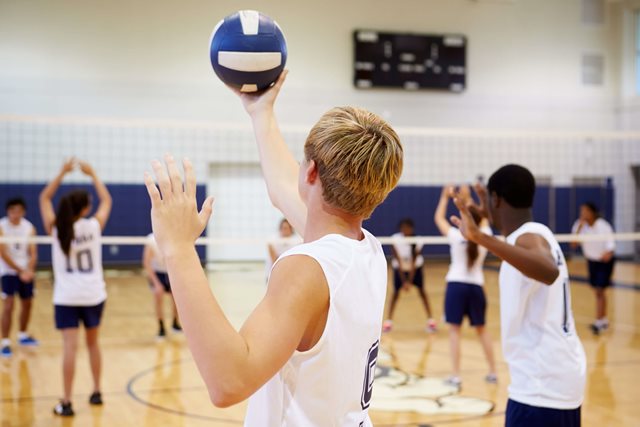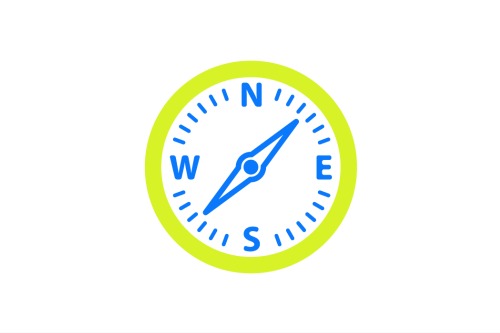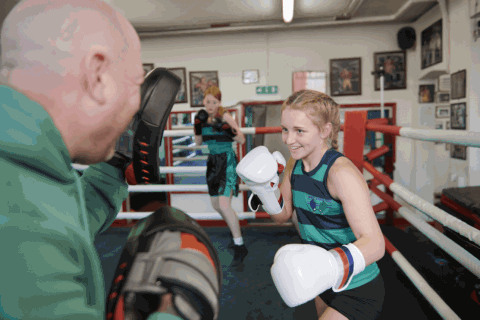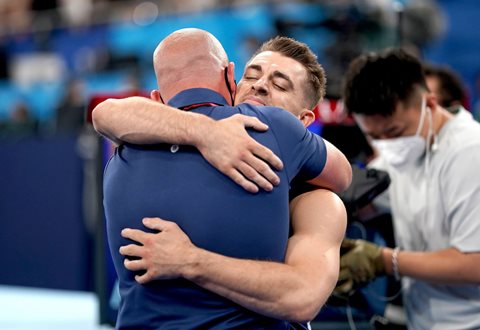Our cookies
We use essential cookies to make our website work smoothly for you. To make sure we're always improving, we'd like to use analytics to track how people use the site. We won't set non-essential cookies unless you give us permission. You can find more information about all the cookies we use in our Privacy and Cookie Policy.
Some cookies are a must for our website to function properly. If you turn off essential cookies, it may affect how you experience our site.
The non-essential cookies we use help us understand how you use our website and make improvements to enhance your experience.
How to Coach "Spike-tacular!" Volleyball to Kids
Coaching volleyball to kids is both challenging and rewarding. Luckily, our guide has got you covered with child-centric tips and advice.

Included in this article:
- CHOICE: Volleyball activities based on age and ability
- VOICE: Coaching beginners and young children
- JOURNEY: Teaching more advanced volleyball
- JOURNEY: Finding exciting ways to explain the rules
- Developing a volleyball coaching philosophy
- How to coach volleyball to children FAQs
- Download FREE Resource: Challenge Yourself - Journey
by Ian Slattery
Volleyball is pretty much a series of failures. You serve, you hit the net. You receive and you fail to get the ball back. That’s why teaching games and practices, and manipulating the rules to create regular successes, is so important. It keeps enjoyment levels up which keeps players wanting to come back the next week.
With precious little visibility in the British sporting media, the responsibility involved in youth volleyball coaching is huge. The good news for coaches is that support and advice is out there. Bertrand Olie has helped develop programmes for coaches to teach volleyball to kids–programmes which are centred around the child making crucial decisions over rules and progression.
How to teach volleyball to kids: our tips
Alter the activities based on age and ability
One of volleyball’s greatest assets is its ability to host mixed ability sessions and games, something Bertrand says is beginning to be rooted in their coaching philosophy.
We’re progressing towards a coaching approach that’s totally centred on each individual–who they are, what their ability level is, what they want to get from the session."
Bertrand Olie Volleyball England
The programme Volleyball England have created to help with that is Volley2s. It splits the game into four stages:
- Red.
- Amber.
- Green.
- Gold.
Each stage has a different set of restrictions on what players are allowed to do with the ball. For example in Red, players can catch the ball and throw it, whereas in Gold, the most challenging stage, players can only volley.
Child-first coaching philosophies are central, particularly around choice, as players can choose their stage and adapt it to their partner and opponent, even changing it during a game. This is wonderfully co-creative and self-directive, giving children the opportunity to shape their experiences while allowing their journey to be inclusive.
The Coaching Compass
Start your child-first coaching journey with the Coaching Compass! Simply answer a few quick-fire questions to create your unique child-first coaching profile.
Chart Your Course
"Let’s say I’m a beginner and you’re already at a Green stage,” Bertrand begins. “We can still play together, just not using the same rules. I will catch the ball, you generally don’t."
It's hard to compare this flexibility with options in other sports. Perhaps allowing one side more players if it’s a team sport, or limiting shot options for one player in an individual sport. But even then, you’re asking one of the players or sides to play down, to deliberately restrict themselves.
Volleyball allows all players to challenge themselves as much as they choose, regardless of varying ability levels. The result? Unsurprisingly, it’s a win all round.
"I was at a primary school this summer and towards the end of a session, when we’d gone through the different stages and the skills they involve, I said, 'Let’s play some games, but you choose what colour you are playing at.'" The fact this goes down so well is further evidence of the impact a Play Their Way philosophy has on children.
"It was only recently I saw the detail behind this campaign [Play Their Way] and I couldn’t believe how well Volley2s sits alongside it. Although we didn’t specifically say, 'voice, choice, journey' in the Volley2s resource, those words still echo so much of what’s in there."
Coaching volleyball to beginners and young children
The primary and most physically obvious barrier to beginners is the net. At over seven feet tall it’s a formidable challenge even for adults, so how should it get introduced to young beginners, considering it plays a crucial role in the game?
"Firstly, with children, we never say the net must be at a set height. But without a net people will naturally throw it flat which is a different skill and can also be dangerous because it’s much faster than looping the ball up. It’s better, then, to adjust not only the height of the net but also the size of the court, because that will provide greater or lesser success for the players."
.jpg)
Again, the children are developing their voice and choice, deciding what those net sizes will be, depending on how much they want to be challenged.
"We can also adapt the ball, or even play with something else. Using a balloon instead of a ball can be a great introduction, which can progress to a beach ball, then a light, soft ball."
Teaching more advanced volleyball to kids
One of the greatest tips for coaching youth volleyball is to get players involved in competitions, where they’ll be exposed to different, often better, players. That will begin to grow their understanding of how to use the skills they’ve been working on. Remember it’s their journey in the sport, so setting themselves goals dependent on what they want to get out it is central to allowing children to fully play their way.
Bertrand recalls a recent experience where a Year 10 group he coaches attended a friendly competition without him. They grew in strides as gradually, match by match, they learned from their opponents, and their own trial and error, how their core skills have a practical use. Bertrand’s supported sessions created the outside of a jigsaw puzzle, but the children’s own match experiences filled in the middle.
"They came back to training the next week and I could visibly see how they had improved, because they experienced fully what volleyball looks like. It was interesting that the festival they went to had a philosophy of letting the players play. There were some coaches who attended, but were instructed to offer advice to everyone, not just their own team. Meanwhile the players did all the officiating, so they were learning even when they weren’t playing a match."
Challenge Yourself - Journey
Ready to take action? Consider these suggestions for ensuring that the children and young people that you coach can enjoy a relevant and appropriate journey in sport and physical activity.
DOWNLOAD TO GET STARTED
Going back to the flexibility of Volley2s, Bertrand explains that it encourages adapting the scoring system as well as different rules to match ability levels. That philosophy can continue into more advanced groups, especially if there are small pockets of advanced players mixed in with a wider group of less skilled or younger players.
"You could, for example, say that if someone is generally at the Red stage – a beginner – then yes they are allowed to catch the ball but if they do win a rally without catching the ball they get ten points."
The beauty behind that approach is that the children never feel like they are failing for long. If they catch the ball each time then that’s fine, they can keep the rally going, and if they try to volley it but miss then that’s only because they are pushing themselves, they can maybe try and catch the next few balls to build their confidence.
"Again we’re talking about the choice and the voice of the child here. They can decide to try for the high points by performing a more difficult skill, or they can stay in their comfort zone. But because the points difference rewards being adventurous, it’s a choice that is weighted towards developing new skills."
.jpg)
Explain the rules in exciting ways
When first considering how to teach volleyball to kids, we’re aiming to keep the game simple and fun, and for children to grow their understanding of the sport as they experience more of it.
The pairing of players who are at different levels allows kids to feel a sense of achievement regardless of the result of that match. In a sense, the rules are bent to allow children to interpret the same point in different ways.
"Two children could play a match where the one at a lower stage has ultimately scored more points than the other. That player could go home and say, 'It was great, I beat this person who is way better than me!' Meanwhile the other player, who technically lost, would say, 'Although I lost against that other player, I played with green rules and they played with Red.' We’re allowing both players to come away with a sense of achievement."
Develop a volleyball coaching philosophy
"When I started as a coach in 1992 I was 17, I didn’t really know anything and my philosophy was limited to just helping the team win. Fast-forward to now and, returning to the example of the festival that my Year 10 group played at, it’s noticeable that while winning is still a part, it’s not the bottom line. The results get written on a whiteboard during these festivals so everyone knows what’s happening, but then rubbed out when its over. They don’t get put online or recorded in a book.
"The next week when the group were telling me about the event, the first thing they said was how many games they won. So winning still plays a part. But they were also telling me about some of the players who caught the ball instead of volleying it, and about the range of ages.
The philosophy underpinning the teaching of volleyball to kids is that what’s important is children themselves finding a level they enjoy playing the sport at, which might mean playing against younger children or children who earn more points for doing the same skill as them."
Bertrand Olie Volleyball England
How to coach volleyball to kids: the FAQs
"It’s a simple game. As a team you try and return the ball over the net inside the court, while trying to stop the ball hitting the floor on your side. What makes it stand out from something like badminton is that you can use your team-mate to achieve those aims."
"When I first start coaching kids volleyball I’ll set up a barrier, give two children a ball to share and challenge them to hit the ball over the barrier and land it on the other side. The skills come about through that basic game. Rule changes can then flow from that beginning – encouraging pushing not catching, etc."
The starting point is an Assistant Coach award, which progresses up to a Level 2 and then a Level 3 award. There is also an Activator course, which is more aimed at organising sessions rather than coaching. For P.E. teachers and primary school teachers seeking how to teach volleyball to kids, the Volley2s resource is free to download and contains lots of advice and ideas, including session plans and over 60 types of practices. A competition organiser guide and framework is due out soon – to request these or find out more please contact [email protected].
Other resources that you may like...
About the contributor
Bertrand Olie played and coached volleyball in France before moving to England in 2006 and working as a development coach in the West Midlands, progressing to coach at a high performance level. He now works within coach education and programme development for Volleyball England, while continuing to coach as a volunteer in local schools and as Head Coach of the women’s team at Black Country Volleyball Club.
SHARE THE MOVEMENT
Help spread the word by sharing this website with fellow coaches!



